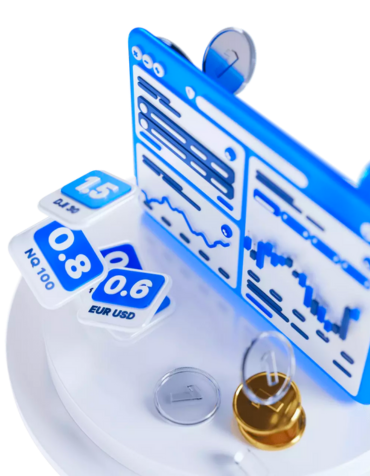We round up the best brokers that we believe offer best value for forex traders.





Trading the USDJPY forex pair involves buying or selling it in the foreign exchange (forex) market. Here are the basic steps to trade USDJPY:
To trade any forex pair, including USDJPY, you'll need to open an account with a reputable forex broker. Ensure that the broker offers access to this specific USDJPY pair.
Deposit funds into your forex trading account. The amount you deposit will determine the size of your trading positions.
Before making any trades, perform a thorough analysis of the USDJPY pair. This analysis typically involves fundamental analysis (economic data, interest rates, geopolitical events) and technical analysis (price charts, indicators) to determine your trading strategy.
Most brokers offer trading platforms that allow you to execute trades. Familiarize yourself with the platform's interface and tools.
Choose whether you want to buy (long) or sell (short) the USDJPY pair based on your analysis. Enter the trade order on your trading platform, specifying the amount (lot size) you wish to trade.
Executes the trade immediately at the current market price.
Sets a specific price at which you want your trade to be executed.
Sets a price at which your trade will be triggered if the market moves in a certain direction.
To manage risk, consider setting stop-loss orders to limit potential losses and take-profit orders to lock in profits at a certain price level.
Once your trade is executed, monitor the USDJPY pair's price movement. Keep an eye on news and events that may impact the exchange rate.
When you achieve your trading objectives, either manually close the trade or wait for your predetermined take-profit or stop-loss levels to be reached.
After closing your trade, assess the outcome. Review your trading strategy and learn from both successful and unsuccessful trades to improve your skills.
Always practice proper risk management. Never risk more than you can afford to lose, and consider using leverage cautiously if available.
For the breakout strategy, you want to focus on finding key levels of support and resistance on the USDJPY chart. Once you've identified these levels, you'll wait for the price to break above or below them with strong momentum. If there's a breakout above resistance, you can enter a long trade (buy). On the other hand, if there's a breakout below support, you can enter a short trade (sell). To manage your risk, make sure to set stop-loss orders below the breakout point. And don't forget to set profit targets based on your risk-reward ratio.
Moving on to the moving average crossover strategy. This one is all about identifying trends using moving averages crossover signals. Apply two moving averages to your USDJPY chart: one shorter-term (like 20-day) and one longer-term (like 50-day). When the shorter-term moving average crosses above the longer-term moving average, it's a buy signal. Conversely, when the shorter-term moving average crosses below the longer-term moving average, it's a sell signal. You can use these signals as entry points for trades that align with the direction indicated by the crossover.
Lastly, let's talk about Fibonacci retracement strategy. This strategy makes use of Fibonacci retracement levels as potential areas of support or resistance where price reversals might happen. Here's how it works: first identify an uptrend or downtrend in USDJPY by connecting swing lows and swing highs using trend lines. Then apply Fibonacci retracement tool to measure potential retracement levels within that trend. Keep an eye out for price retracing and finding support or resistance near those Fibonacci levels like 38.2%, 50%, or 61.8%. When you see signs of price bouncing off these levels and other technical indicators confirm it, that could be a good time to enter a trade in line with the trend direction.